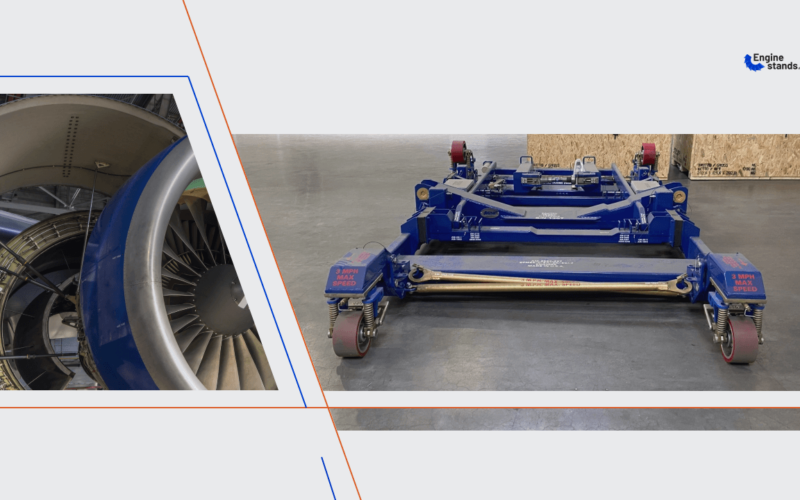In the world of aviation, there are two different types of engine stands – OEM approved (Original Equipment Manufacturer) and non-OEM approved. While both are used across the industry the differences are worth explaining so that when an engine enters into maintenance, transportation, or storage, the correct stand type is selected.
Firstly, do all engine stand providers offer both OEM-approved and non-OEM-approved stands? The answer is a straightforward no.
Some companies resort to working exclusively with PMA (Parts Manufacturer Approval) stands, which are cheaper to acquire and can be leased at a more competitive rate than their certified counterparts. On the other hand, some businesses use both types of stands to cater to any customer inquiry.
Hanna Lavinskaja, Business Development Manager at engine stand and aircraft tooling rental company Enginestands.com, explains the thinking behind working with OEM and PMA equipment. “The initial investment needed to acquire an OEM stand is far greater than a PMA, but the added benefit of being able to service customers in need of both certified and non-certified is far too valuable to miss out on.”
Let’s compare the two different types of stands and address the case for each one.
Non-OEM-approved stands are often referred to as aftermarket or PMA. These stands are used extensively by MROs, airlines, and other aviation companies. For example, due to higher costs and long lead times for certified stands, operators will choose PMA stands if there are no restrictions from the engine manufacturer, insurer, or lessor. Economics is another point for consideration as non-OEM stands usually cost significantly less than certified stands. Additionally, the pool of non-certified stands is typically larger, making it is easier to locate one closer to the client’s location.
Then there are OEM engine stands, these are a range of stands that have been approved by engine manufacturers – General Aviation, Rolls Royce, IAE, etc. These stands are usually more expensive to rent or acquire outright but are often required when working on an engine that is under warranty. The main difference between OEM stands and regular stands is that their structural integrity and design are rigorously tested by engine manufacturers to ensure that no accidents occur during daily operations, and there is no risk of damage to an engine. Certified stands are subject to longer lead times due to fewer engine stand manufacturers having obtained a seal of approval from the engine makers.
“Both types of stands are common in the aviation maintenance industry, but they are used in different cases. We see more demand for non-certified stands coming from MROs because the engines they repair are mostly out-of-warranty and have almost no restrictions on what stand is used. Alternatively, specialised aircraft engine maintenance facilities tend to lean towards OEM engine stands in order not to breach warranty or they are subject to internal or external limitations. On numerous occasions, Enginestands.com has seen customers mixing and matching stands they use to ensure effective use of resources, it is quite a normal practice to have different types of engine stands at one facility,” said Hanna Lavinskaja.

